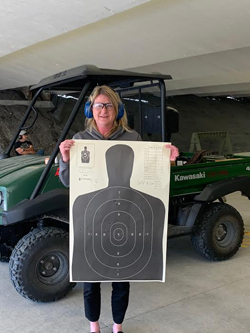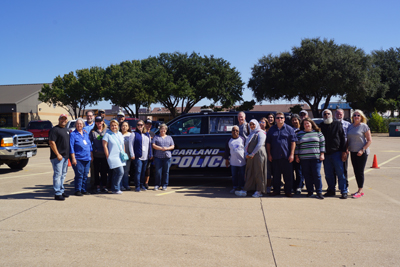After Lt. Pedro Barineau shared information about domestic violence, the students paired off to participate in a prepared scenario.
We were given information before the exercise that we would be officers answering a call about a possible case of domestic violence. As my partner and I entered the room, the first thing I saw was a man with blood on his shirt. He was asking for someone to call an ambulance. There was also a lady yelling and a couple more people, who were also yelling.
I was absolutely unable to concentrate on anything except for the man with blood on him and the things I did not see could have gotten me killed in a real incident.
I knew that I wasn’t great at multi-tasking, but I didn’t realize how bad I was! But the first thing I saw, the man with blood on him, was essentially all I was able to focus on. I realized when it would have been too late in a real incident, that there were syringes on a table, guns and a knife being swung around..
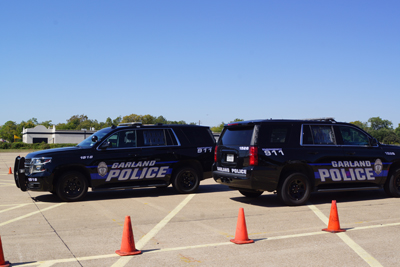
As the man with the bloody shirt continued to talk about needing an ambulance, I told him that I’d call 911. All I really wanted to do was yell at him to shut up, which, of course, would not be appropriate officer behavior. After the exercise, I was reminded that, in this scenario, I was 911 and I had been telling the man I would call 911.
The chaotic nature of the scene, even though it wasn’t real, was striking. I know that not many people are able to listen, watch, survey a situation and react appropriately. Police officers have to do all these things, and more, at once.
The next exercise was created to teach us how police officers clear a building. In this scenario, there were bad folks in a building, some armed, some not. We were given instructions on how to find them and get them out of the building. Just the instructions before the exercise made my head spin. There was a lot of information to take in. A SWAT officer was telling us how to enter the rooms, how to check the corners and to stand shoulder-to-shoulder with another officer, each facing different ways. 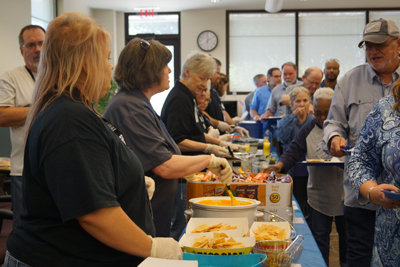 There was more, but my brain shut down at some point and nothing else could get in there.
There was more, but my brain shut down at some point and nothing else could get in there.
The officer was great. He was concise and to the point and he was in no way the reason that I didn’t get all the information. Looking back, I see that he was trying to teach us a strategy. Therein lies the problem. I hardly ever, well, actually never, approach anything with a strategy.
My personality dictates that I jump right in and figure things out as I go along. That, folks, is another reason why I could never be a police officer.
Drive and shoot
There was a special Garland Citizens Police Academy class on a Saturday where participants had an opportunity to drive one of the GPD Tahoes and to go to the shooting range.
I couldn’t go to the shooting range so Sarah Burt, a classmate, shared her experience. She was especially impressed with the number of safety precautions that were taken and added that even officers have to review the rules on every trip to the range. They are also required to have an instructor with them.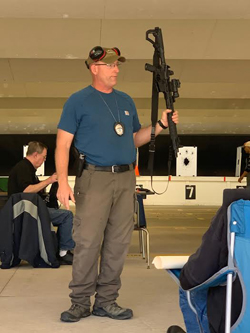
After a lengthy safety session, the first thing they learned was how to hold a gun using a plastic replica. To shoot, they were required to wear ear protection and glasses. Each participant got to shoot 10 rounds from five yards and 10 rounds from seven and one-half yards.
Burt said that it had been a very long time since she had fired a gun and she was a little nervous, so she was happy with her score in the 160s.
“This was my favorite class,” she said. “I thoroughly enjoyed shooting the gun and I wish I could do it again!”
After the gun range, everyone gathered at the police station for a great lunch provided by the Garland Citizens Police Academy Alumni Association. After lunch, we met at the Williams Stadium parking lot to drive one of the department’s Tahoes.
A course was constructed with traffic cones and an experienced driver drove us through it, first at a low speed, then at a not-so-low-speed.
Here’s what I learned – of all the reasons that I can think of for not wanting to get arrested, having to ride in the back seat of that police vehicle, would be at the top of the list. To say that it was uncomfortable would be an understatement. It was OK when the course was being demonstrated at a slow speed. But when the driver sped up, it was no longer OK!
The back seat is made of plastic, not a cushion in sight. Plastic is slick, so during the fast demonstration of the course, even with a seat belt, we slid all over the place. It felt much like a ride at Six Flags.
I had to leave early so I didn’t get to drive the vehicle. That’s probably just as well, though, because I’m often told by my family that I drive like an old lady. It might have taken me a while to get through the course!
Of the students that I got to watch, some drove fairly fast, and others took it slow. Their speeds were recorded and the person with the fastest time will be announced at our graduation dinner.


